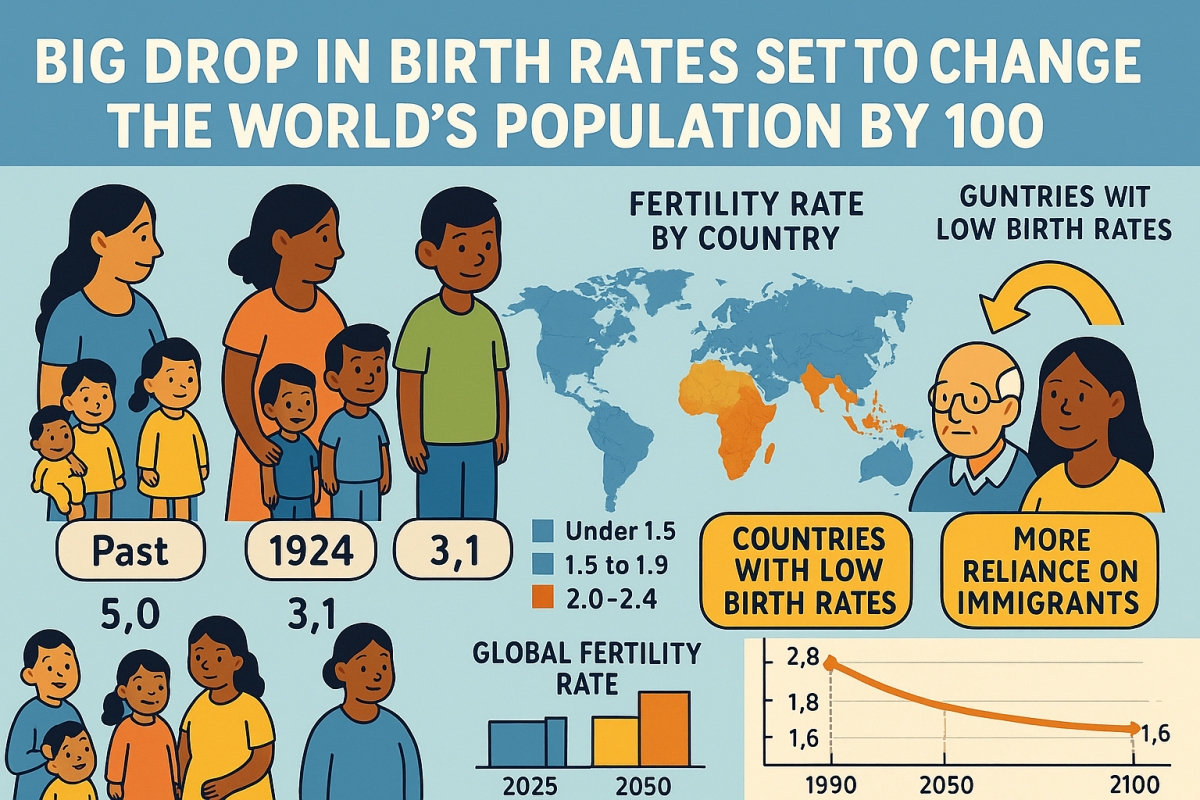Written by Yvonne Misando
Birth rates around the world are falling fast, and this is expected to change how the global population grows in the future. According to the United Nations, this is a major shift that will affect many countries.
In the past, the average woman had about five children. By 1990, that number dropped to 3.3. In 2024, it’s now around 2.1 children per woman. This is the minimum number needed to keep the population steady without counting immigration. Experts think this number will keep falling to 1.8 by 2050, and down to 1.6 by 2100 which is too lo w to maintain current population sizes.
This drop in birth rates is happening almost everywhere. Between 2000 and 2025, every region and income group in the world has seen fertility rates go down, and this is expected to continue. But Africa is an exception. In 2025, 18 of the 20 countries with the highest birth rates will be in Africa. In countries like Chad, Somalia, and the Democratic Republic of Congo, women are still having about 5.9 children on average. Because of this, Africa’s share of the world population will rise from 19% in 2025 to 26% in 2050.
Falling birth rates will have big effects. Over the next 25 years, 38 countries with more than one million people will start to see their populations shrink. In the past 25 years, only 21 countries saw this happen. China will see the biggest drop, it could lose over 155 million people. Other countries like Japan, Russia, Italy, Ukraine, and South Korea will also lose people. By 2050, most countries will have birth rates that are too low to replace their populations, and by 2100, this could be true for 97% of all countries.
This change brings both problems and chances for new solutions. Countries with low birth rates will face challenges like fewer workers and aging populations. These countries will need to create better support for families and may have to rely more on immigrants. On the other hand, countries with high birth rates mostly in sub-Saharan Africa will need to improve education for girls and give better access to healthcare to help slow population growth.
In many ways, lower birth rates show progress. More people have access to birth control, more women are going to school and working, and people have more control over when and how many children they have. But the UN says the world now needs to get ready for a future where population growth is not guaranteed. The changes in how populations grow or shrink will affect jobs, communities, and how countries plan for the future.

